Production Manager, ´Yerevan, a celebration of Life`, 15' HD promo clip, 2013
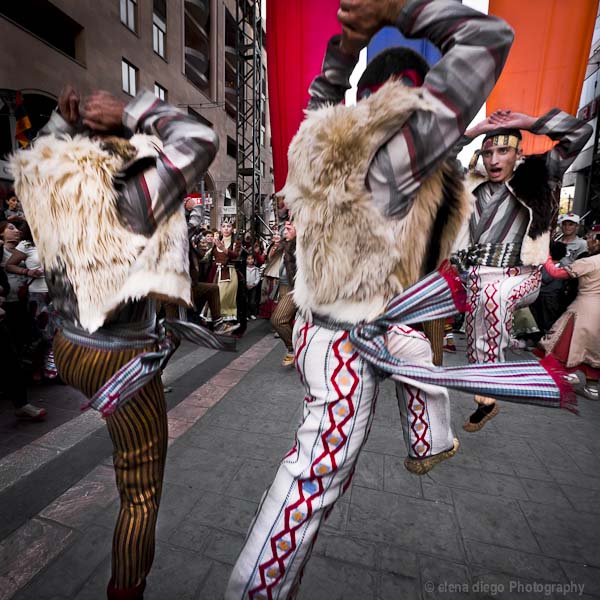 Men performing traditional Armenian dance during the celebration of Yerevan´s 2795 years anniversary
Men performing traditional Armenian dance during the celebration of Yerevan´s 2795 years anniversary Dancers in traditional Armenian costume
Dancers in traditional Armenian costume Dancers in traditional Armenian costume
Dancers in traditional Armenian costume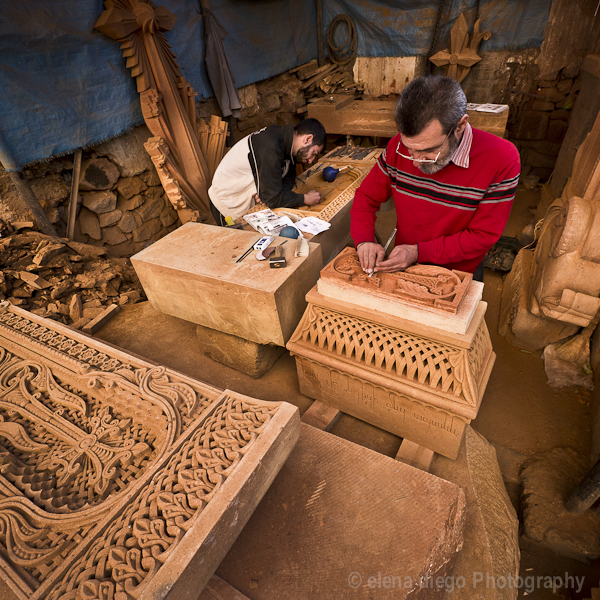 Armenian artisan carving khachkars at his open air atelier
Armenian artisan carving khachkars at his open air atelier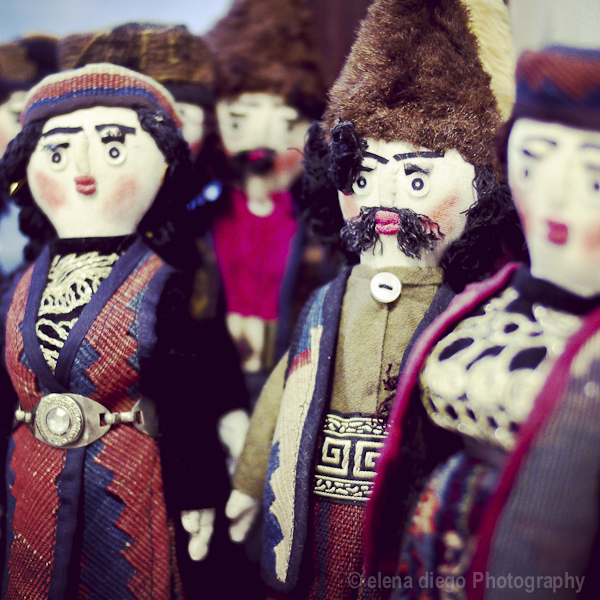 Armenian dolls in traditional costumes
Armenian dolls in traditional costumes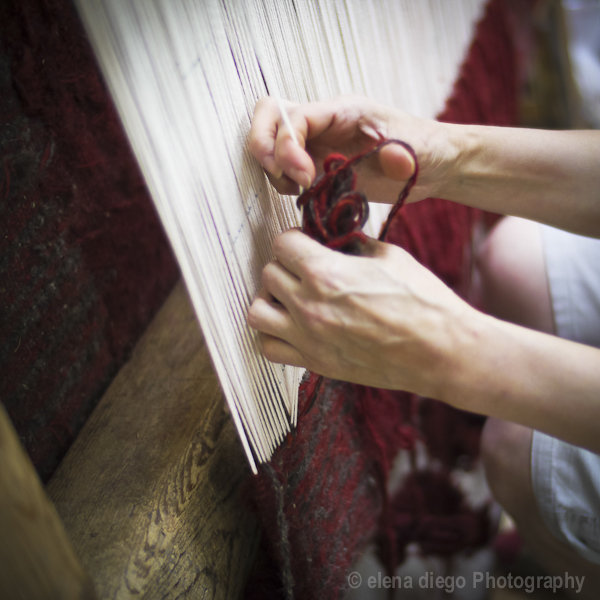 Artisan weaving Armenian carpets
Artisan weaving Armenian carpets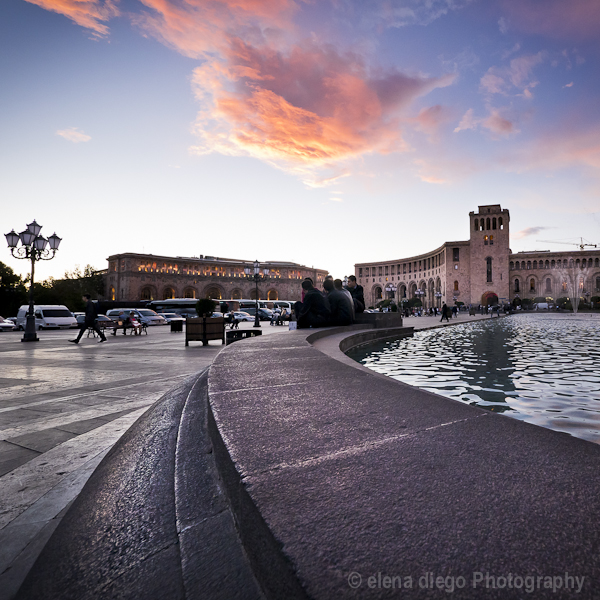 Republic Square at sunset
Republic Square at sunset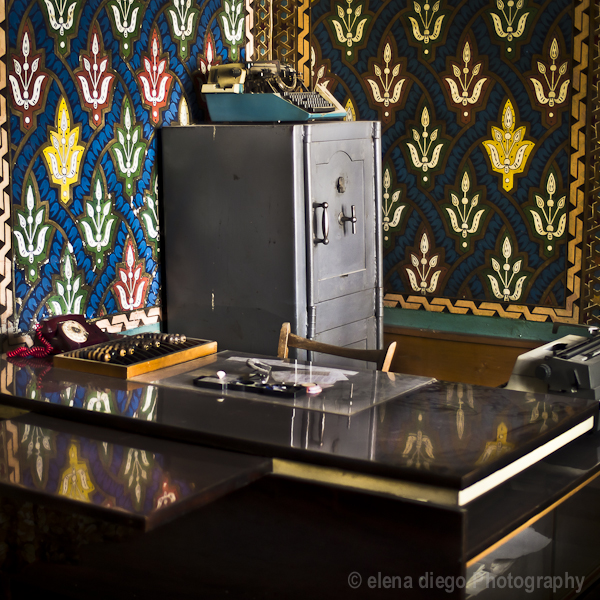 Interior of one of the oldest remaining black tufa houses in Yerevan
Interior of one of the oldest remaining black tufa houses in Yerevan Sculpture Komitas Vardapet
Sculpture Komitas Vardapet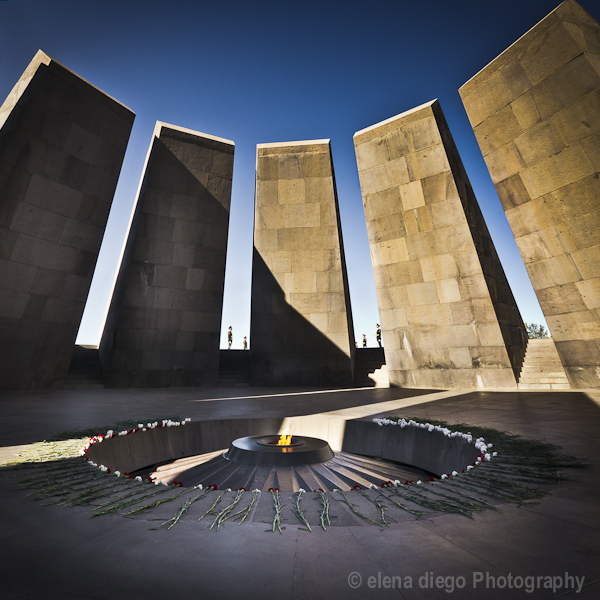 Eternal flame. Official ceremony at the Tsitsernakaberd, Armenian Genocide Memorial
Eternal flame. Official ceremony at the Tsitsernakaberd, Armenian Genocide Memorial Yue Minjun, unknown sculpture. Cafesjian Center for the Arts
Yue Minjun, unknown sculpture. Cafesjian Center for the Arts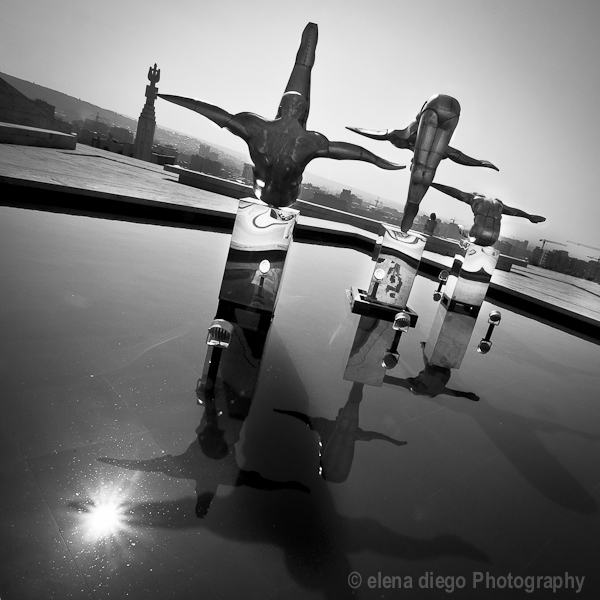 Swimmers sculpture, Cafesjian Center for the Arts
Swimmers sculpture, Cafesjian Center for the Arts Matenadaran library
Matenadaran library Old manuscript being restored, Matenadaran
Old manuscript being restored, Matenadaran Religious ceremony at St Gregory the Illuminator Cathedral
Religious ceremony at St Gregory the Illuminator Cathedral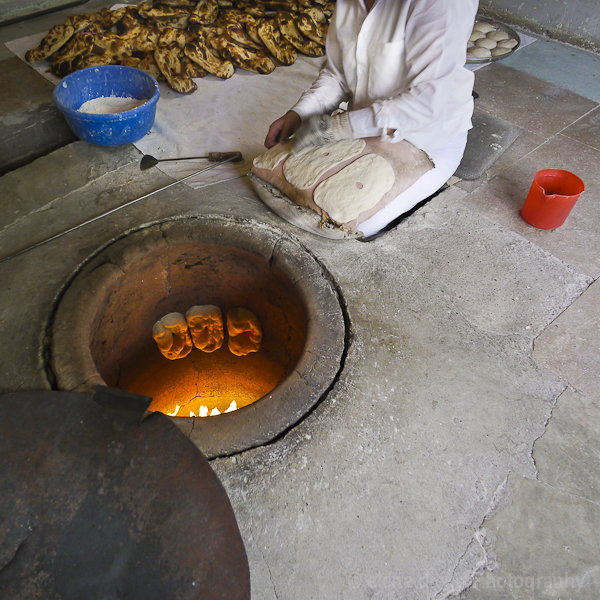 Baking bread in a traditional tonir (Armenian oven)
Baking bread in a traditional tonir (Armenian oven)  Fruits and vegetables market
Fruits and vegetables market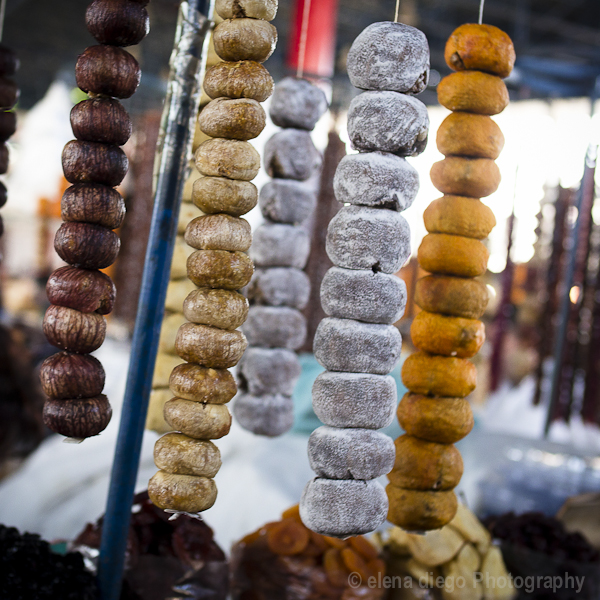 Armenian dried fruits
Armenian dried fruits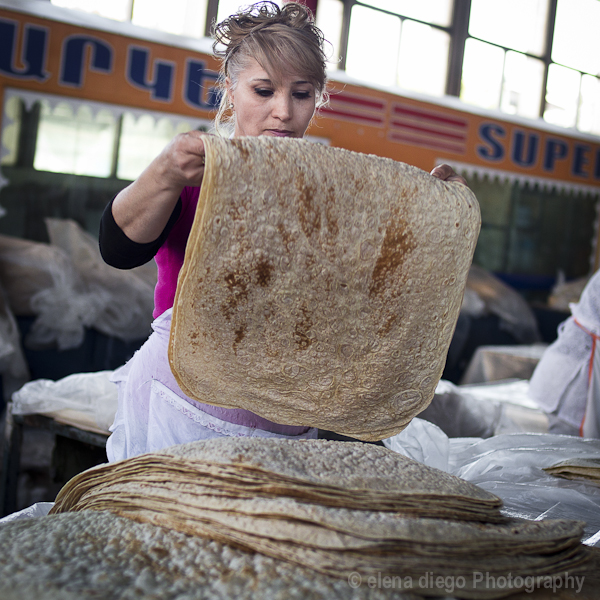 Lavash, Armenian bread
Lavash, Armenian bread Cover market
Cover market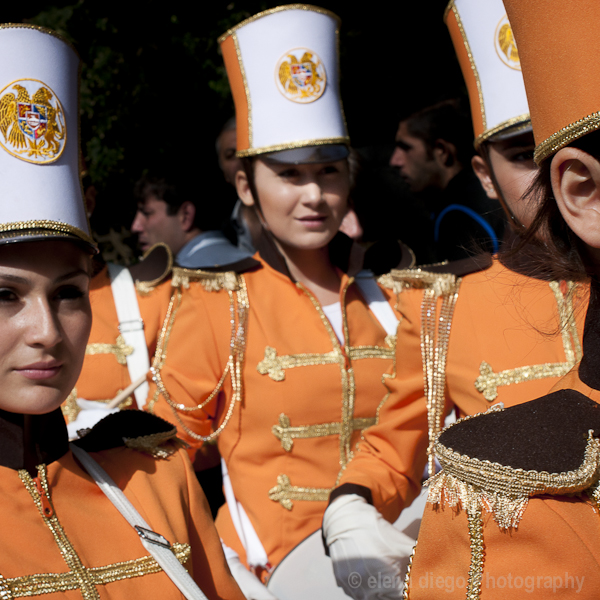 People
People People
People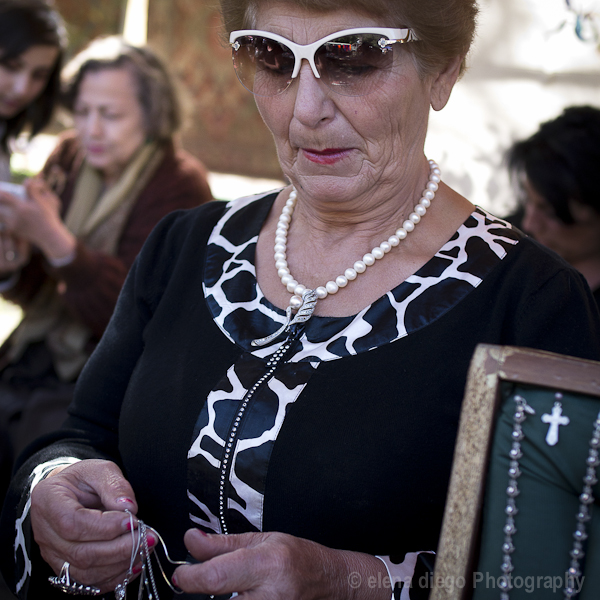 People
People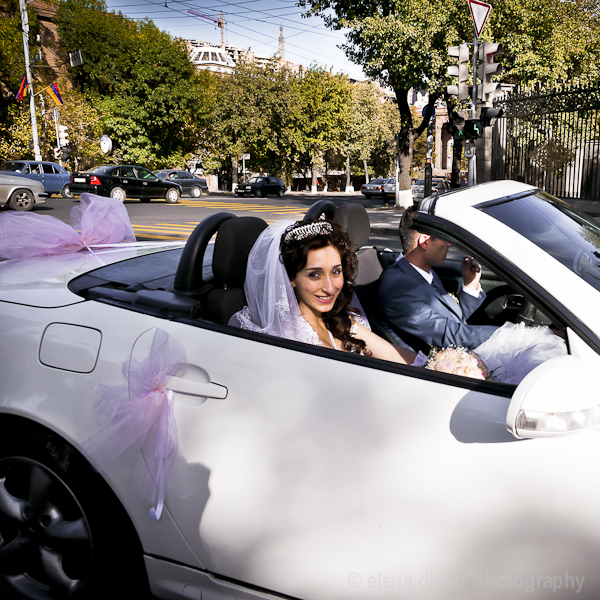 People
People People
People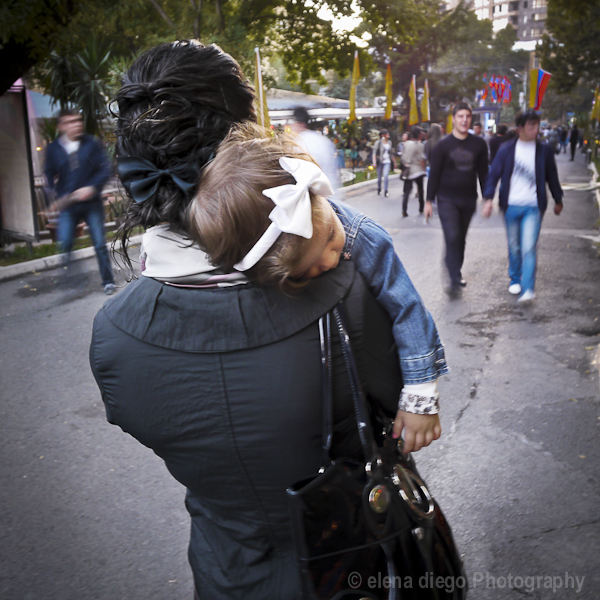 People
People Chez Gayane´s restaurant
Chez Gayane´s restaurant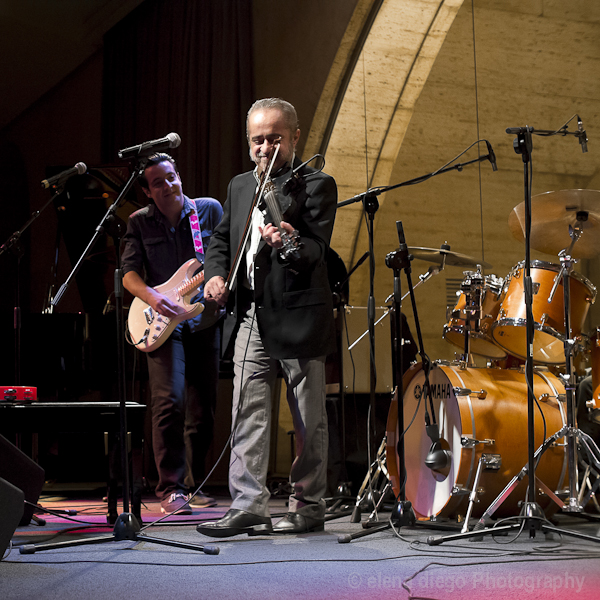 Forsch concert
Forsch concert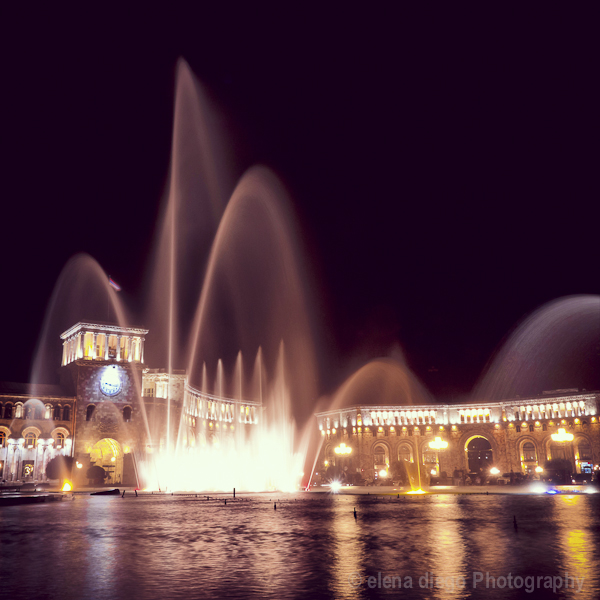 Dancing fountains Republic Square
Dancing fountains Republic SquareDuring the city´s Anniversary the streets of Yerevan fill up with people of all ages. Everyone runs to the streets on this day, to stroll around for hours, to seat at the numerous cafes and to attend the numerous performances that take place all over the city. One of the oldest cities in the world, Yerevan is always a juxtaposition of old and new, this can be seen almost in everything. All along the festive period, traditional tunes and ancestral dances mix with electronic sounds coming from street scenarios and floats. The city is a burst of colour, sound and smiley faces decorated with the colours of the Armenian flag: red, blue & orange everywhere.
After Mout Ararat the Khachkars, or Armenian cross-stones, are probably the most representative symbol of Armenian tradition, history and culture. They embed Armenian identity and religion in beautiful floral and ancestral motives. The crosses stones can be found all over the country often in very remote places, where one could think nobody has set foot before. Most Khachkars were erected for the salvation of the soul or as memorials for deceased people. They also could commemorate a military victory, the construction of a church, or as protection from natural disasters. They are testimony of Armenian culture development. Armenian artisans continue with the tradition of carving these pieces of art in tuff, the local stone of volcanic origin, while the knowledge and savoir faire prevails in the families from one generation to the next.
Yerevan was known across the Soviet Union as the ´Pink City`, due to the colour of the local volcanic stone called tuff, used in the construction of the city´s official buildings and houses. Although many of the original beautiful buildings have disappeared giving way to new architectural styles and trends, some have been preserved and parts of the city still turn into shades of pink and orange at sunset. The sky, the façades and the light feed into each other, creating beautiful oneiric atmospheres. Especially at the Republic Square the spectacle can be truly amazing as the whole square is surrounded by impressive pink tufa architecture.
Never decline the invitation of someone who opens the door to his/her kingdom. You never know what kind of wonders hide behind the walls. There are not many old tufa houses left in the city but the ones that still remaining keep behind their façades a priceless testimony of a period of History and a style of living.
The Cafesjian Center for the Arts in Yerevan will not leave you indifferent. Besides the exclusive contemporary art collection in display indoors and outdoors, the location and the architecture, a stone cascade inherited from the Soviet period, are something difficult to describe. You must experience it.
The place will trap you and easily you could end up seating for hours, days, on one of the beds of the cascade looking at Mt Ararat on the other side of the sky, raising from the ground like an impossible snow capped giant.
One of the most beautiful and inspiring places I have seen in the world is the Matenadaran, an ancient manuscript depository for medieval manuscripts and books. The Matenadaran preserves one of the richest and largest collections of medieval literature in the world. Almost 17,000 manuscripts and around 30,000 other documents covering different fields: History, Geography, Medicine, Chemistry. Written in different languages such as Arabic, Persian, Hebrew, Japanese and Russian. The manuscripts and books are authentic pieces of art, the colours and precision of the miniatures are priceless. The Matenadaran is not only a depository but also a centre for research, restoration and knowledge development.
© 2013 elena diego Photography